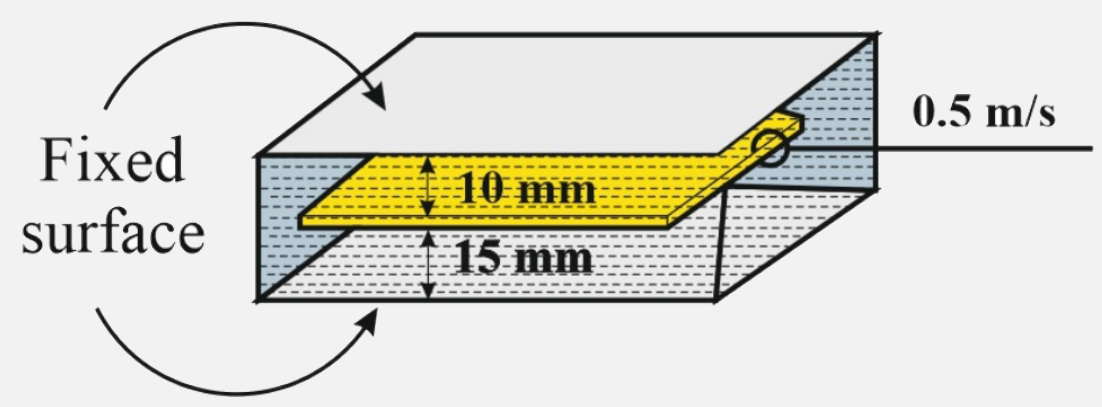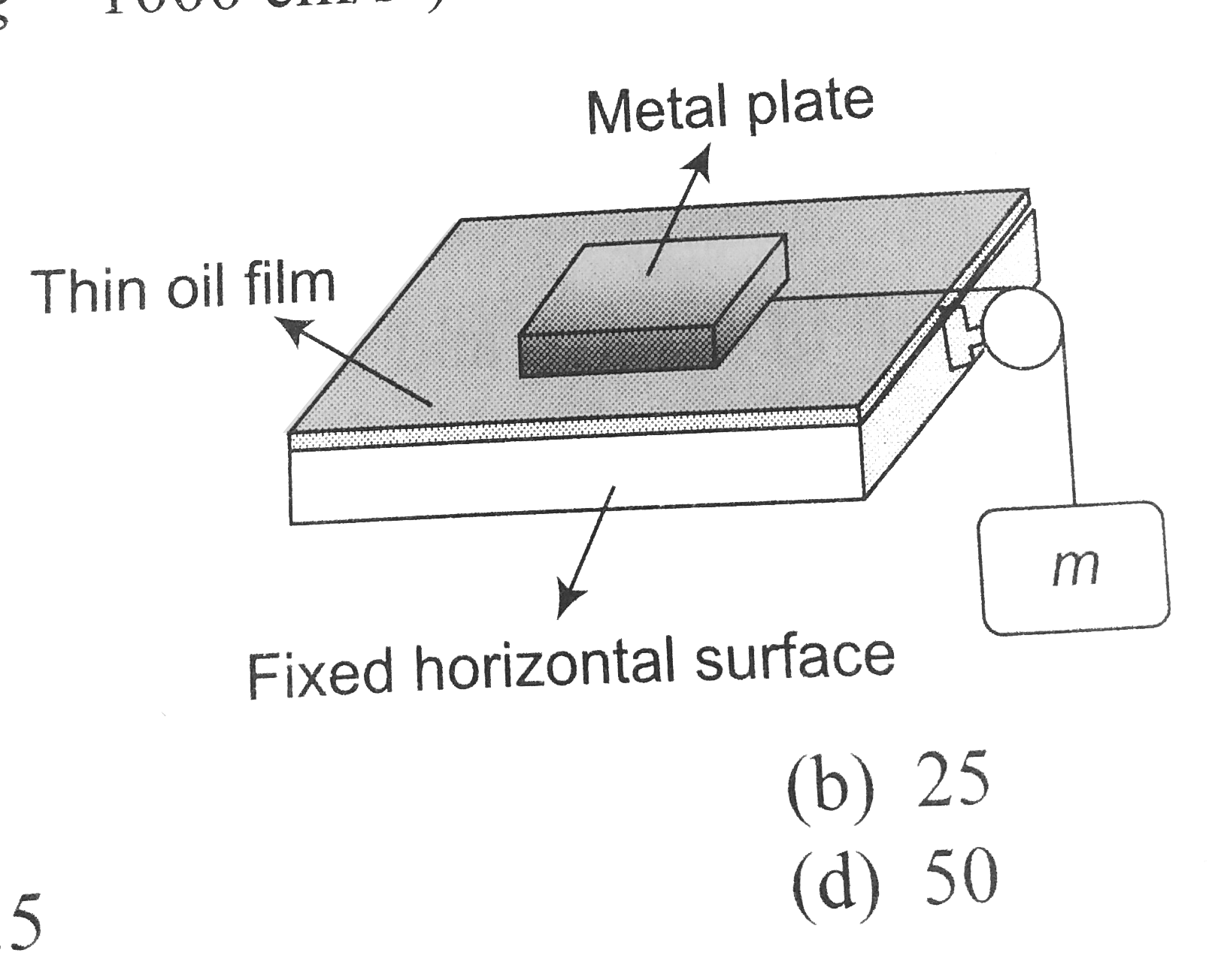
A space 2.5cm wide between two large plane surfaces is filled with oil. Force required to drag a very thin plate of area 0.5m2 just midway the surfaces at a speed of 0.5msec is 1N. The coefficient of viscosity in kg−sm2 is:
5×10−2
2.5×10−2
1×10−2
7.5×10−2
The correct Answer is:B

Velocity gradient=0.52.52×10−2
as force on the plate due to viscosity is from upper as well as lower portion of the oil, equal from each part,
Then F=2ηAdvdz=2×η×(0.5)0.51.25×10−2
⇒η=2.5×10−2kg−secm2
Topper's Solved these Questions
- PROPERTIES OF MATTERBOOK - A2ZCHAPTER - PROPERTIES OF MATTEREXERCISE - Problems Based On Mixed Concepts
34 Videos
- PROPERTIES OF MATTERBOOK - A2ZCHAPTER - PROPERTIES OF MATTEREXERCISE - Assertion Reasoning
20 Videos
- PROPERTIES OF MATTERBOOK - A2ZCHAPTER - PROPERTIES OF MATTEREXERCISE - Pressure Difference And Capillarity
23 Videos
- OSCILLATION AND SIMPLE HARMONIC MOTIONBOOK - A2ZCHAPTER - OSCILLATION AND SIMPLE HARMONIC MOTIONEXERCISE - Chapter Test
29 Videos
- ROTATIONAL DYNAMICSBOOK - A2ZCHAPTER - ROTATIONAL DYNAMICSEXERCISE - Chapter Test
29 Videos
Similar Questions
Glycerine is filled is 25mm wide space between two large plane horizontal surfaces. Calculate the force required to drag a very thin plate 0.75m2 in area between the surface at a constant speed of 0.5m/s if it is at a distance of 10mm from of the surfaces in horizontal position? Take coefficient of viscosity η=0.5Ns/m2. Fill the value of X where X= force required to drag/6.25

View SolutionA force of 3.14N is required to drag a sphere of radius 4cm with a speed of 5ms−1 in a medium in gravity free space. Find the coefficient of the viscosity of the medium.
View Solution
Knowledge Check
The space between two large plane surfaces is 2.5 cm and it is filled with glycerine.
What force is required to drag a very thin plate 1m2 in area, between the surfaces at a speed of 1m/s ? (The plate is at a distance of 1 cm from one of the surfaces. ) (η=0.75Ns/m2)A100 NB75 NC50ND125 NThe force of 2000 dyne is required to move a flat glass plate of surface area 10cm2 with a velocity of 1 cm/s over a surface of glycerine 1 mm thick. The coefficient of viscosity of glycerine is
A0.2 poiseB0 poiseC20 poiseD20.5 poiseA metal plate of area 500cm92) is kept on a horizontal surface with a layer of oil of thickness 0.5 mm between them. The horizontal force required to drag the plate with a velocity of 2 cm/s is
(coefficient of viscosity =0.9 kg/ms)A180 NB18 NC0.018 ND1.8N
Glycerine is filled in 25 mm wide space between two large plane horizontal surfaces. A thin plate of area 0.75m2 at a distance of 10 mm from one of the surfaces is in a horizontal position be the plates inside the glycerine. It is dragged horizontally at a constant speed of 0.5ms2. Take coefficient of viscosity η= 0.5 Ns m−2. What is the force required to drag the plate at a constant speed (in newton) ?

View SolutionFind the minimum force required to drag a hard polythene plate of area 2m2 on a thin film of oil of thickness 0.25cm and η=15 poise. Assume the speed of the plate is 10cms−1.
View SolutionThere is a 1 mm thick layer of oil between a flat plate of area 10−2m2 and a big plate. How much force is required to move the plate with a velocity of 1.5cm/s. The coefficient of viscosity of oil is 1 poise
View Solution
A rectangular metal plate has dimensions of 10cm×20cm. A thin film of oil separates the plate from a fixed horizontal surface. The separation between the rectangular plate and the horizontal surface is 0.2mm. An ideal string is attached to the plate and passes over an ideal pulley to a mass m. When m=125gm, the metal plate moves at constant speed of 5cms, across the horizontal surface. Then the coefficient of viscosity of oil in dy≠−scm2 is (Use g=1000cms2)
View SolutionThe surface tension of a liquid is 0.5 N/m . If a liquid film is formed on a ring of area 0.02 m2 then its surface energy will be
View Solution
